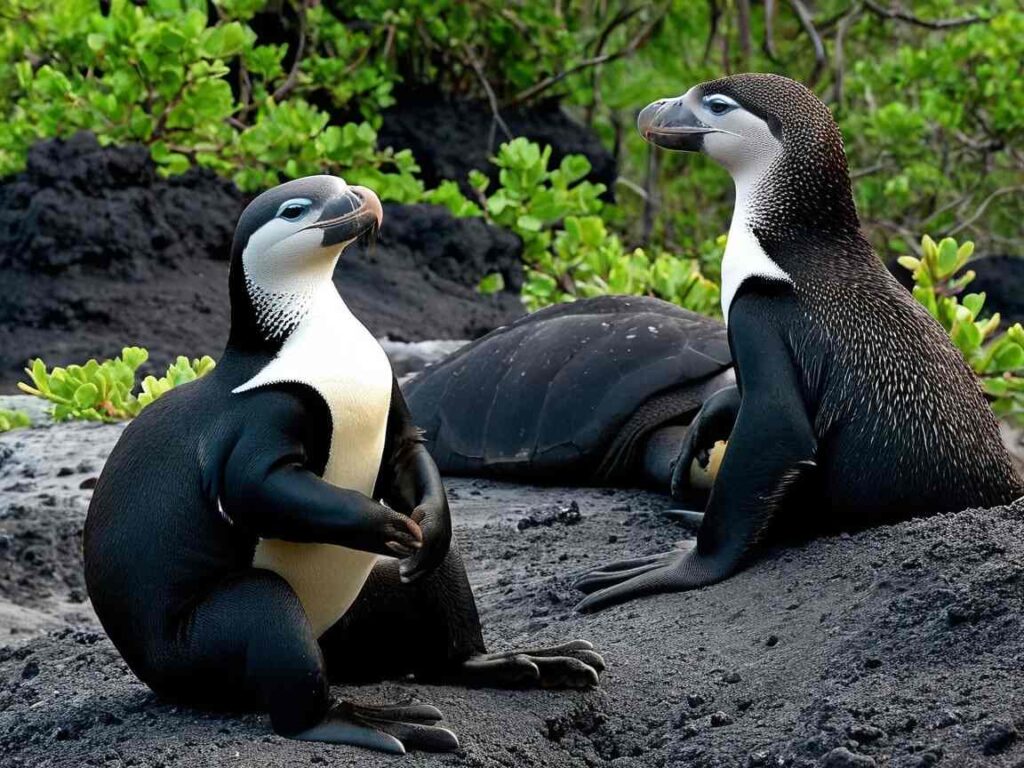Islas Galapagos Winer: A Complete Guide!

The Galápagos Islands, an awe-inspiring archipelago in the Pacific Ocean, remain one of the most sought-after destinations for nature lovers, scientists, and adventure seekers. Their unique biodiversity, endemic wildlife, and breathtaking landscapes make them a year-round paradise. However, visiting the Galápagos in winter offers an exceptional experience, with mild temperatures, active wildlife, and prime marine life encounters.
In this comprehensive guide, we explore what makes the Galápagos Islands a remarkable destination in winter.
Climate Overview:
Warm, Wet Season (December to May):
During this period, the Galápagos experience warmer temperatures and increased rainfall. Average temperatures range from 24°C to 29°C (75°F to 85°F), with March and April typically being the hottest and wettest months. Days are often sunny, punctuated by occasional heavy showers, leading to lush vegetation across the islands. Sea temperatures are warmer, averaging around 25°C (77°F), making it ideal for swimming and snorkeling.
Cool, Dry Season (June to November):
Known locally as the “garúa” season, this time is characterized by cooler temperatures and reduced rainfall. Average temperatures range from 19°C to 25°C (66°F to 77°F). A misty fog, called garúa, often envelops the highlands, providing moisture despite minimal rainfall. The lowlands remain arid, and sea temperatures drop to around 22°C (72°F). The Humboldt Current brings nutrient-rich waters, leading to increased marine activity.
Climate and Weather Conditions
The Galápagos Islands experience two primary seasons: the warm, wet season from December to May and the cool, dry season from June to November. The winter months (June to August) fall into the cool, dry season, also known as the “Garúa season.” During this period:
- Temperatures: Daytime temperatures range from 21°C to 26°C (70°F to 79°F), making it pleasant for outdoor activities.
- Rainfall: Light drizzles, or “Garúa,” are common, but heavy rainfall is rare.
- Water Temperatures: The ocean temperature drops to around 18°C to 23°C (64°F to 73°F), making wetsuits essential for snorkeling and diving.
- Ocean Currents: The Humboldt Current brings nutrient-rich waters, enhancing marine biodiversity and attracting larger marine species such as whales and sharks.
Wildlife Encounters in Winter
Winter in the Galápagos is a fantastic time to witness unique wildlife behaviors. Several species become more active due to the nutrient-rich waters and breeding cycles. Some of the most remarkable animal encounters include:
Marine Life
- Whale Watching: Winter is the best season to spot migrating humpback whales as they travel through the Galápagos waters.
- Hammerhead Sharks: Schools of scalloped hammerhead sharks are frequently seen around Wolf and Darwin Islands, making it a prime time for diving enthusiasts.
- Manta Rays: Giant manta rays flourish in nutrient-rich waters, offering spectacular underwater viewing opportunities.
- Sea Lions: Playful sea lion pups are abundant, as this season coincides with their breeding period.
Birdwatching
- Albatross Courtship: The waved albatross, found exclusively on Española Island, engages in fascinating mating rituals during winter.
- Blue-footed Boobies: These iconic birds continue their courtship displays, with males performing their signature foot-raising dance.
- Flightless Cormorants: These unique birds, only found in the Galápagos, thrive in the cool waters, making winter an ideal time for observing them.
Land Wildlife
- Giant Tortoises: Although visible year-round, the cooler temperatures allow for more comfortable hikes to see these ancient creatures in their natural habitat.
- Marine Iguanas: These unique reptiles, adapted to swimming and diving for algae, are seen in large numbers basking on the volcanic rocks.
Best Activities to Enjoy in Winter
The winter season in the Galápagos is ideal for various activities, from underwater exploration to scenic hikes.
Snorkeling and Diving
The Humboldt Current enhances marine life activity, making winter an excellent time for snorkeling and diving. The best locations include:
- Devil’s Crown (Floreana Island): A submerged volcanic crater teeming with reef sharks, sea turtles, and schools of colorful fish.
- Kicker Rock (San Cristóbal Island): A famous dive site where lucky divers might encounter hammerhead sharks, sea lions, and rays.
- Wolf and Darwin Islands: Considered the ultimate diving spots in the Galápagos, these islands offer unparalleled encounters with large pelagic species.
Wildlife Photography
With abundant wildlife and dramatic volcanic landscapes, winter is a prime season for photography enthusiasts. Key locations include:
- Española Island: Home to the magnificent waved albatross and vibrant marine iguanas.
- Fernandina Island: A pristine island where visitors can capture shots of flightless cormorants, sea lions, and penguins.
- Santa Cruz Island: Known for the Charles Darwin Research Station and opportunities to photograph giant tortoises up close.
Hiking and Exploration
Winter’s cooler temperatures make hiking more enjoyable, allowing visitors to explore the islands’ volcanic terrain and diverse ecosystems.
- Sierra Negra Volcano (Isabela Island): One of the world’s largest volcanic craters, offering breathtaking panoramic views.
- Bartolomé Island: Famous for its Pinnacle Rock and scenic trails with incredible viewpoints of the surrounding islands.
- Lava Tubes (Santa Cruz Island): Underground tunnels formed by lava flows, providing a unique geological experience.
Travel Tips for Visiting the Galápagos in Winter
Packing Essentials
- Light Layers: Pack breathable, moisture-wicking clothing for warm days and a light jacket for cooler mornings and evenings.
- Wetsuit: Essential for snorkeling and diving in the cooler waters.
- Sun Protection: The equatorial sun remains strong year-round, so bring a hat, sunglasses, reef-safe sunscreen, and lip balm with SPF.
- Sturdy Footwear: Hiking shoes or closed-toe sandals are necessary for rugged terrain and wet landings.
Booking and Travel Considerations
- Cruises vs. Land-Based Tours: Cruises offer access to remote islands, while land-based tours provide more flexibility for those prone to seasickness.
- Advance Reservations: Winter is a popular travel season, so booking flights, cruises, and accommodations well in advance is recommended.
- Park Regulations: Follow strict conservation guidelines, such as maintaining a safe distance from wildlife and not removing any natural objects.
Conclusion
Visiting the Galápagos Islands in winter presents an extraordinary opportunity to witness diverse wildlife, enjoy world-class diving, and explore stunning volcanic landscapes. With comfortable temperatures, abundant marine life, and breathtaking scenery, the Galápagos in winter remains an unforgettable adventure for any traveler. Whether you’re an avid diver, wildlife photographer, or nature enthusiast, this enchanting archipelago offers a one-of-a-kind experience that should be on every explorer’s bucket list.
Also Read:







